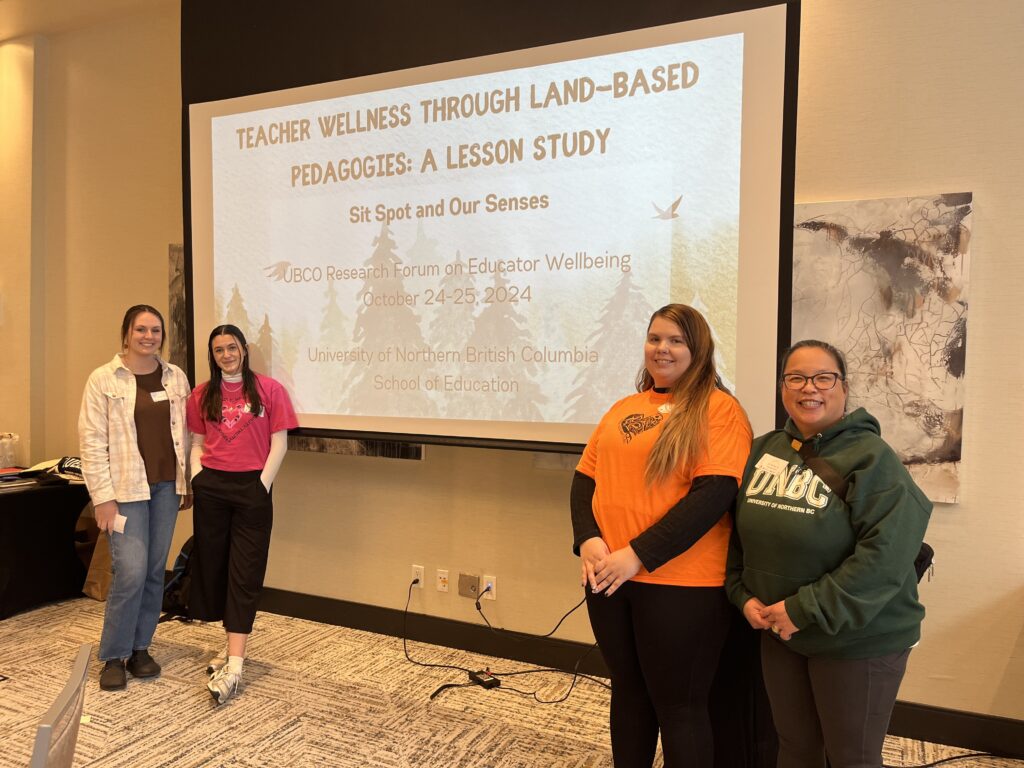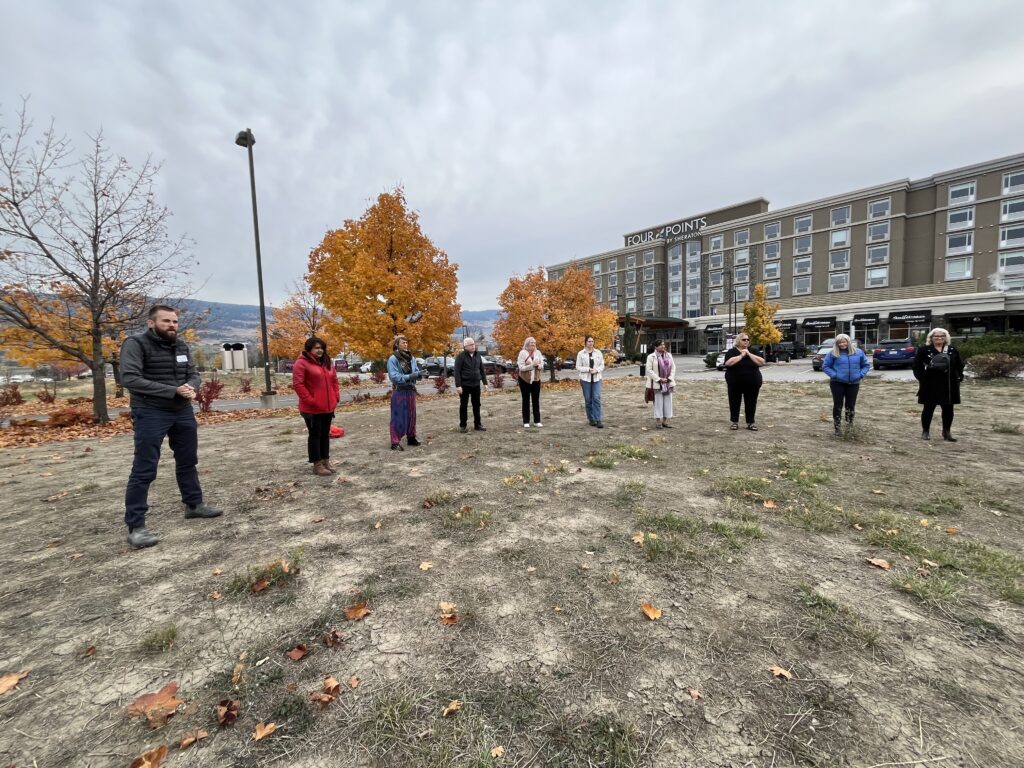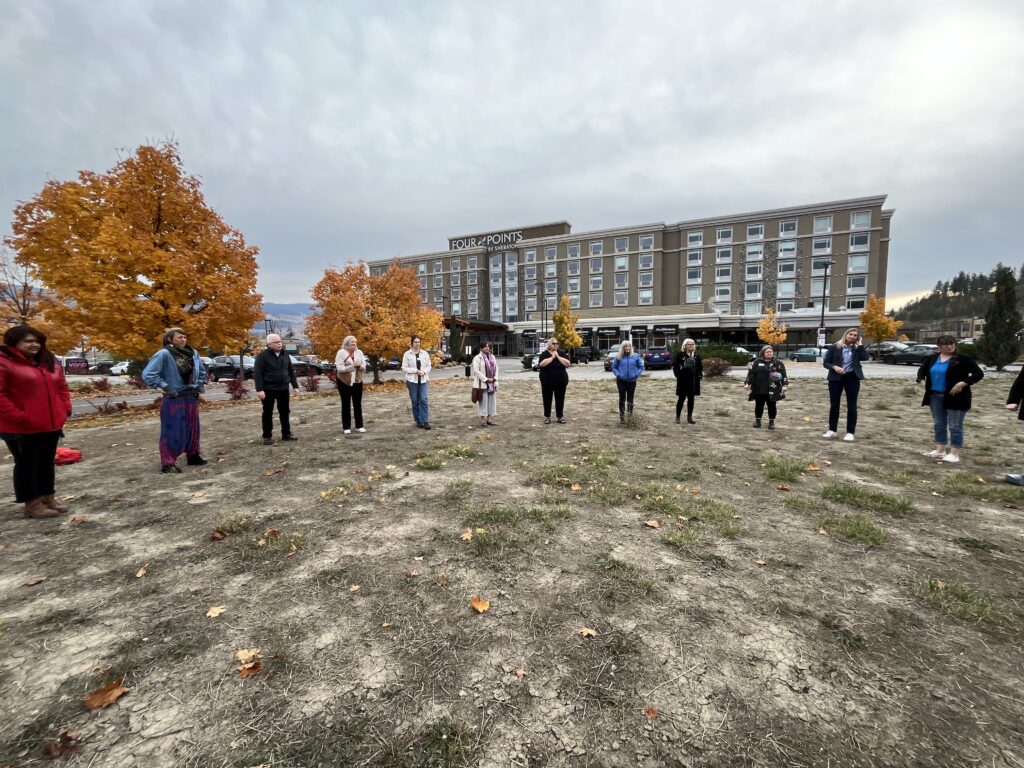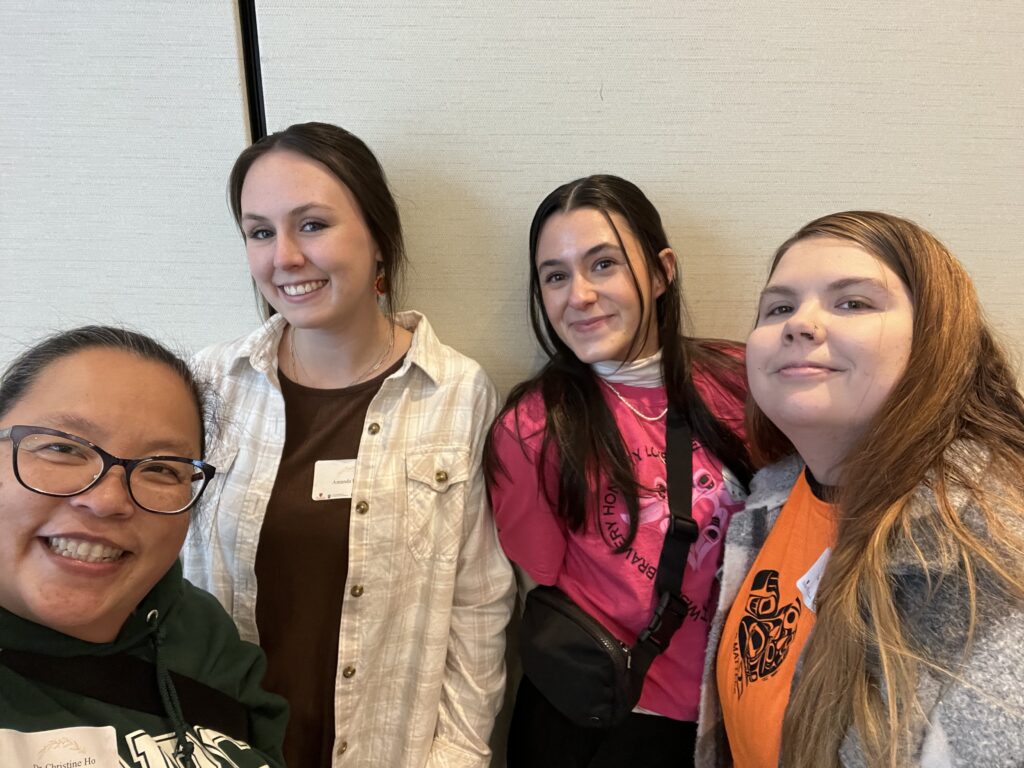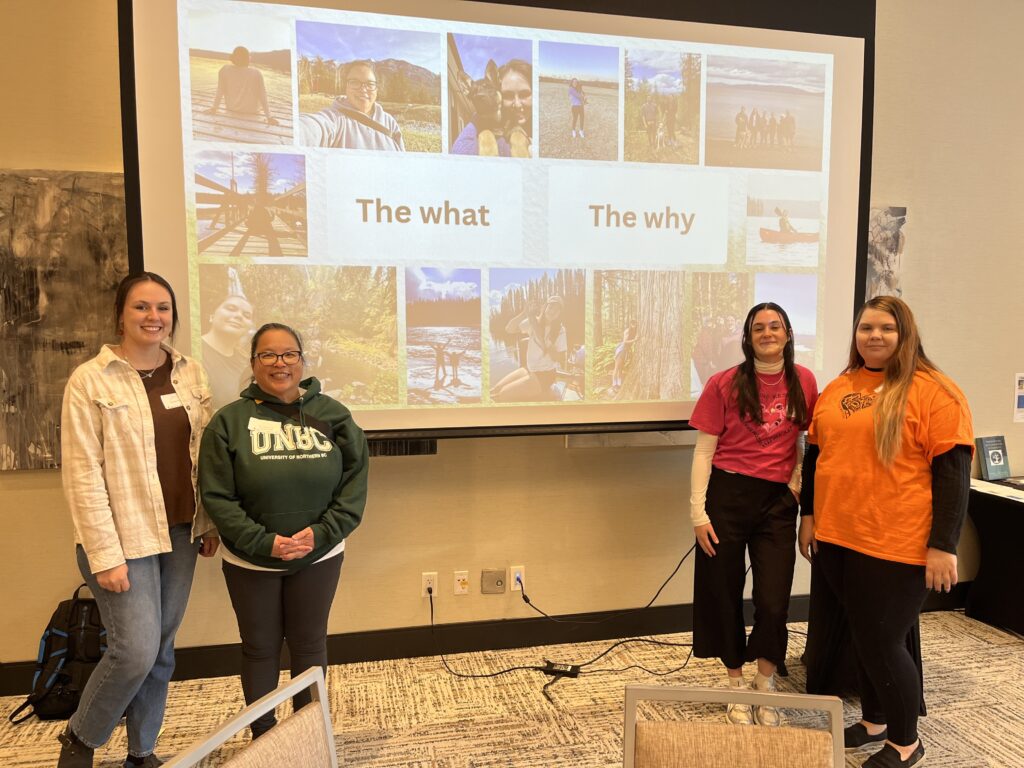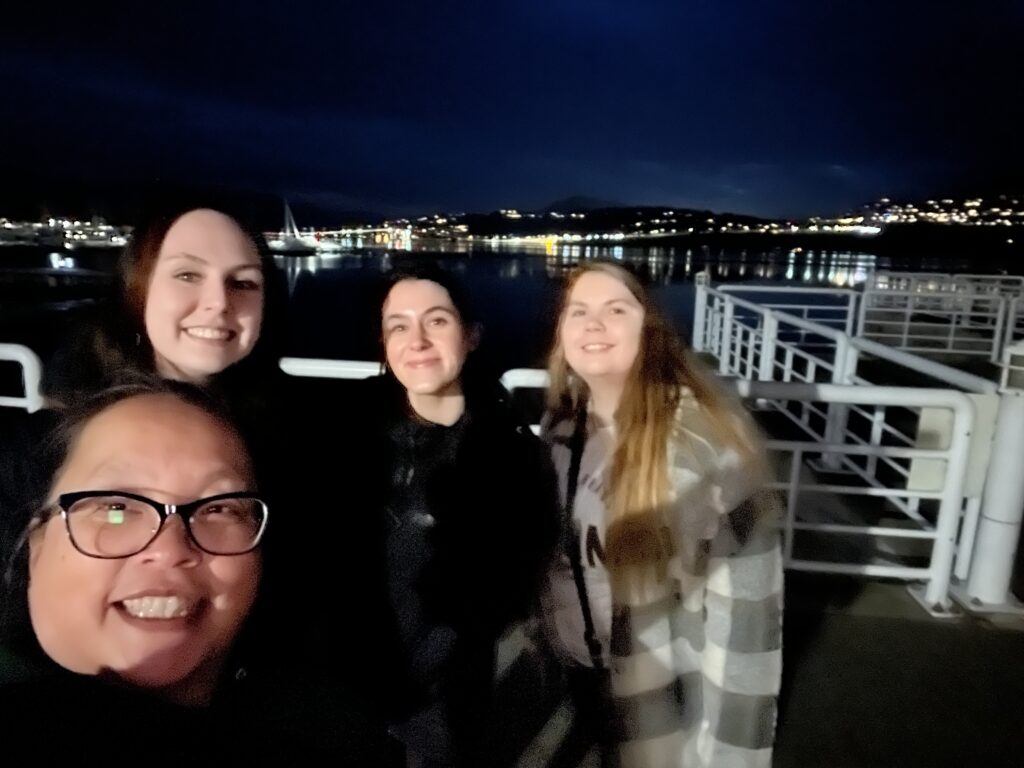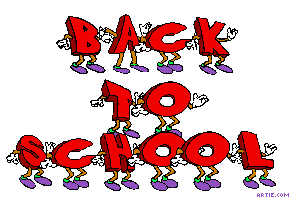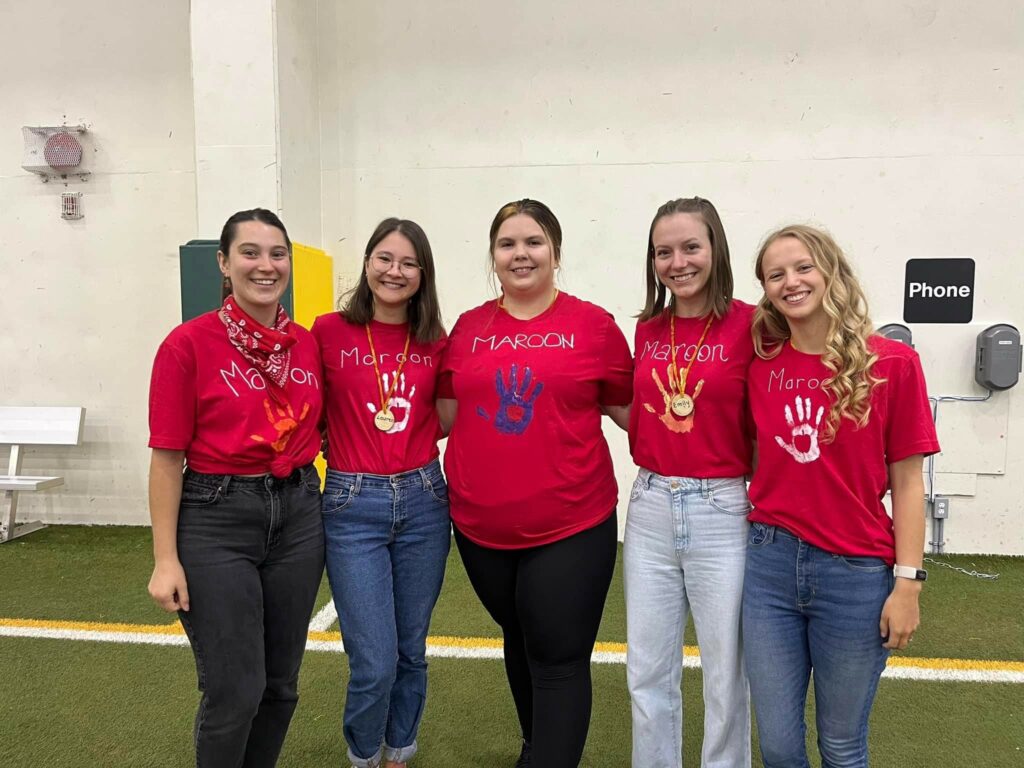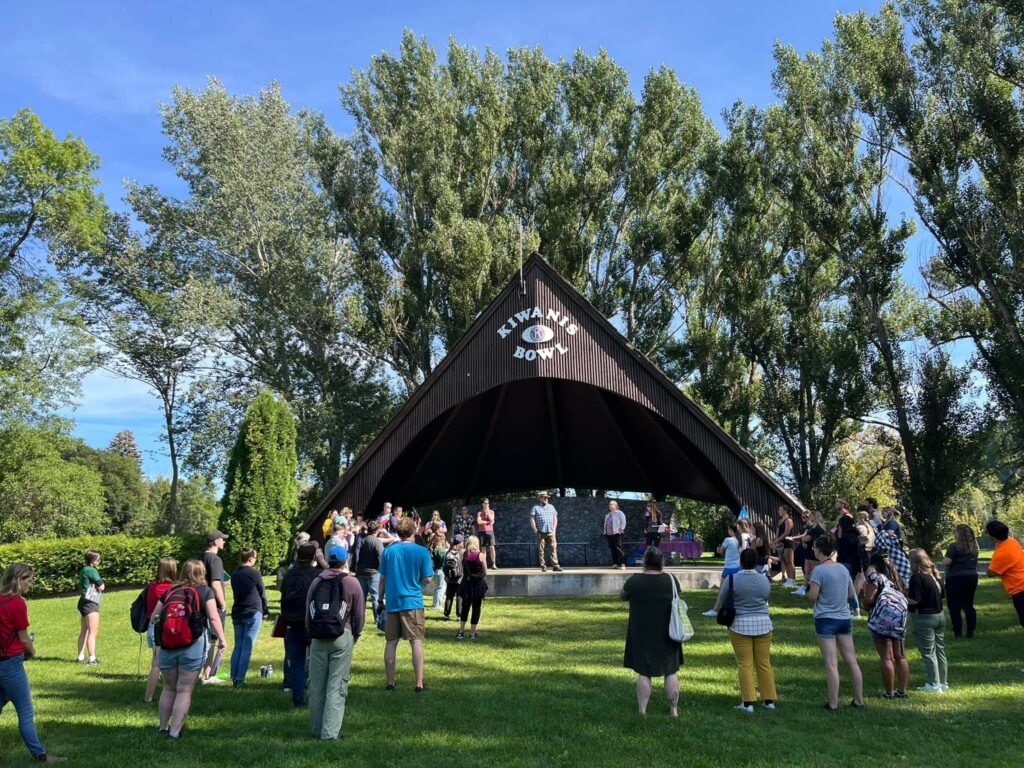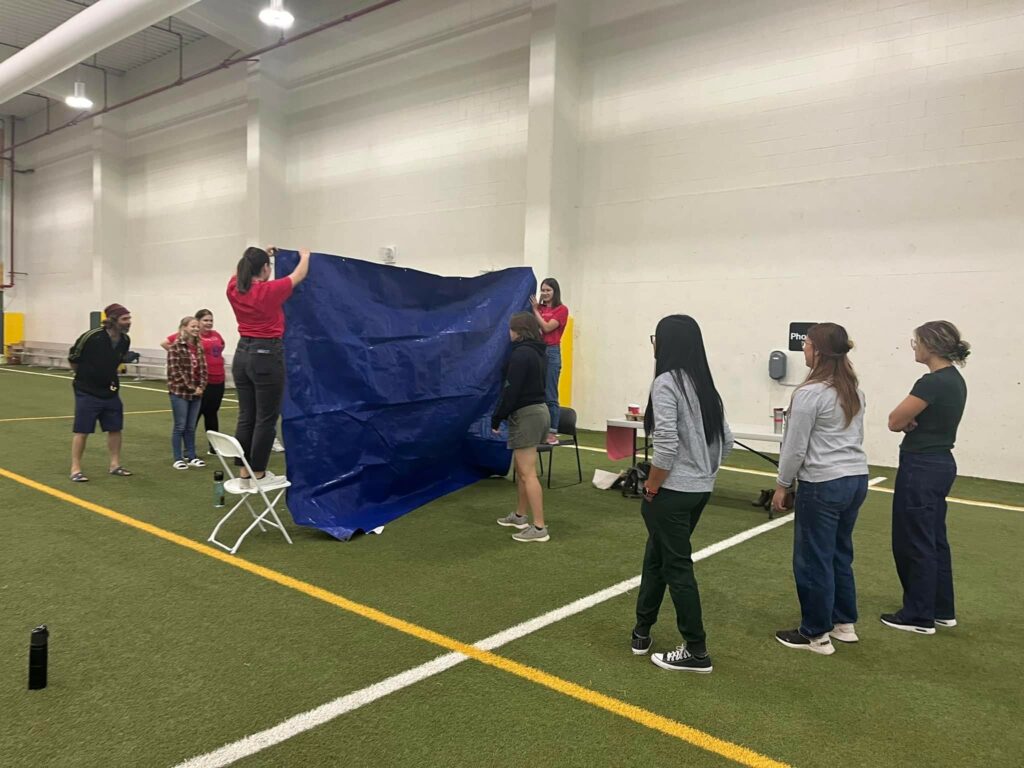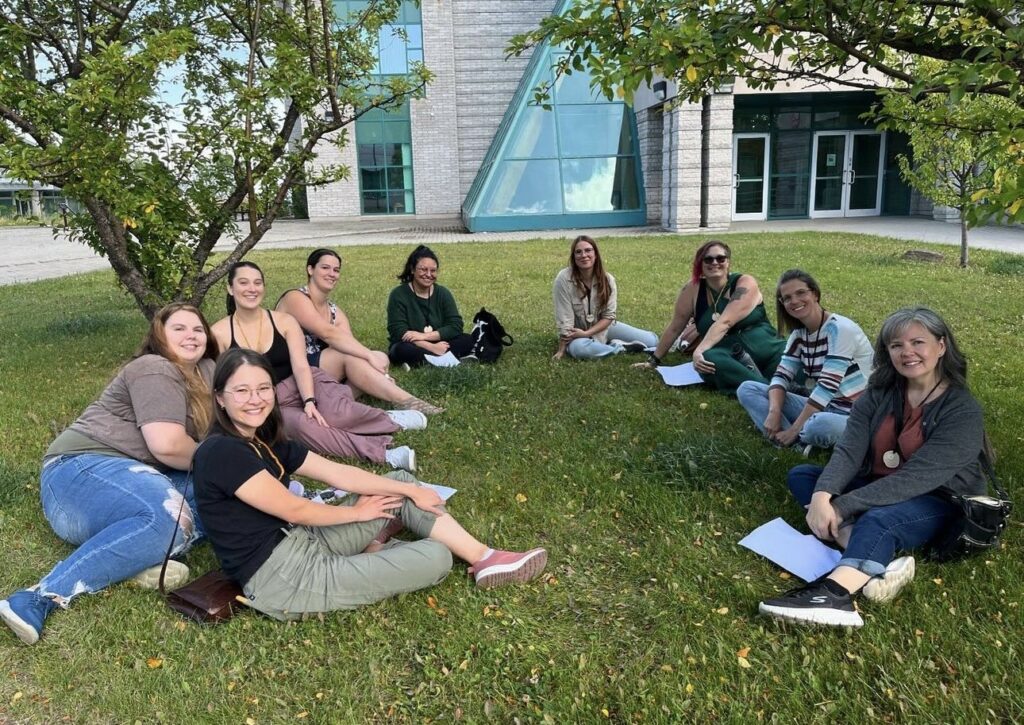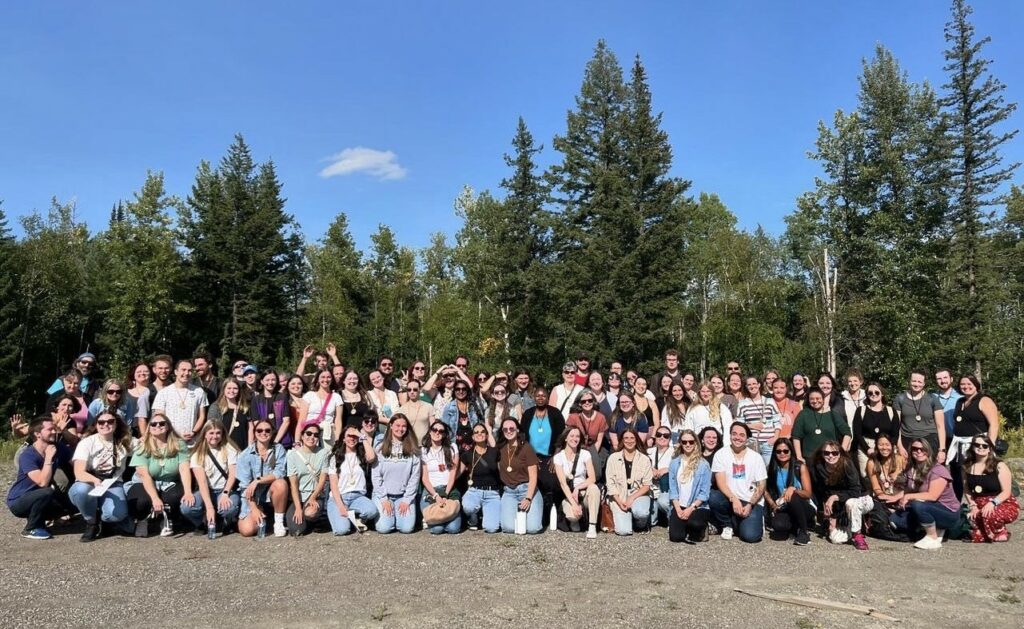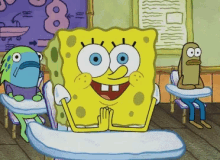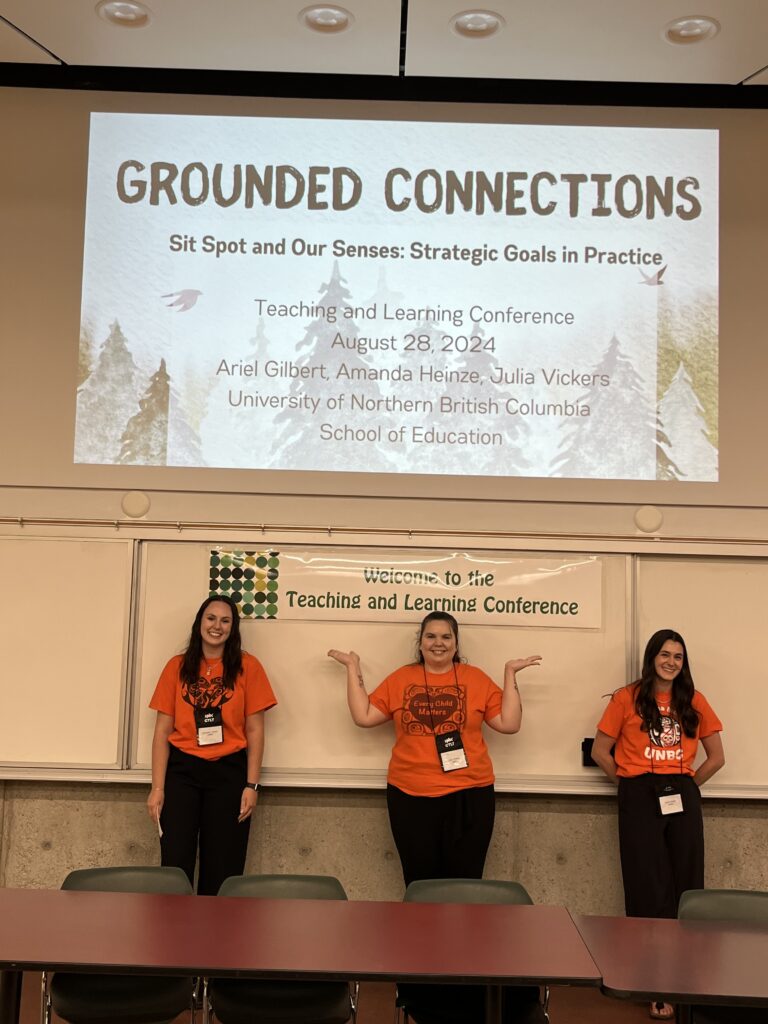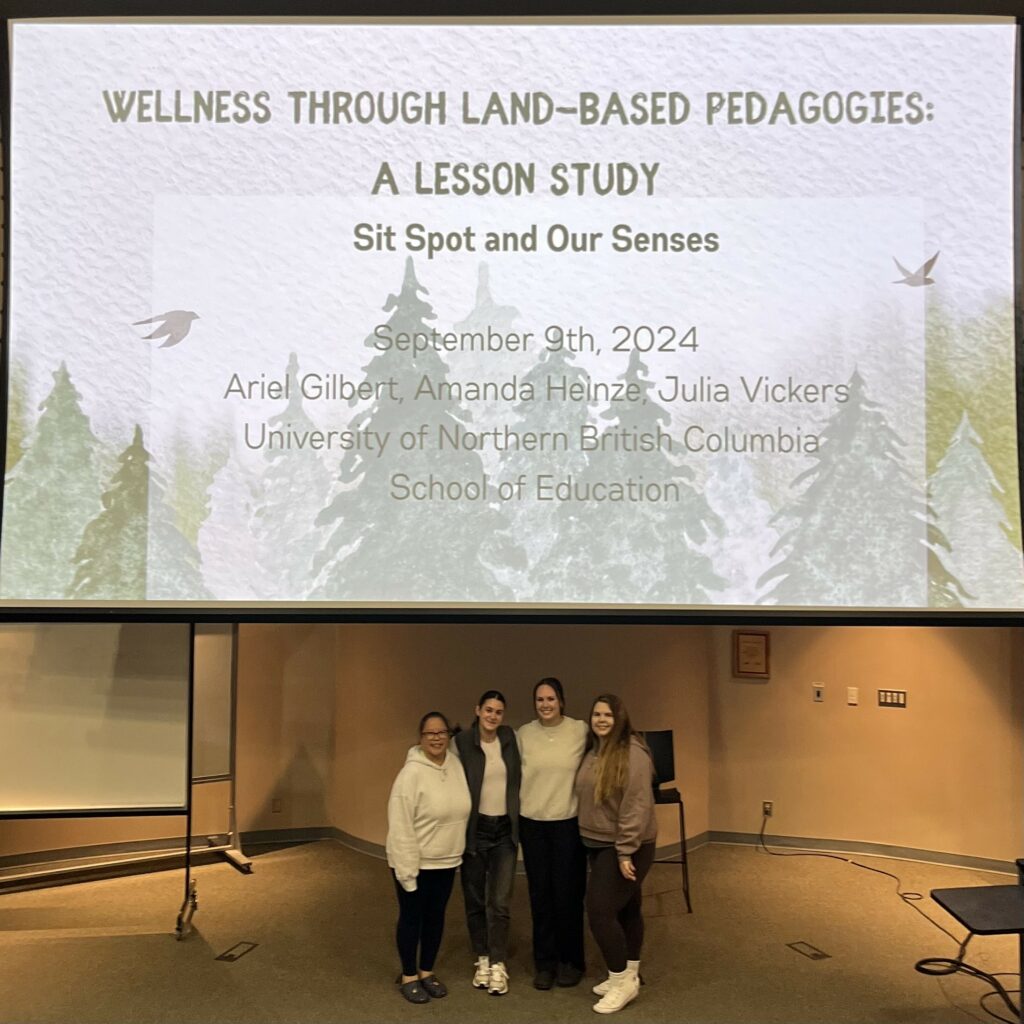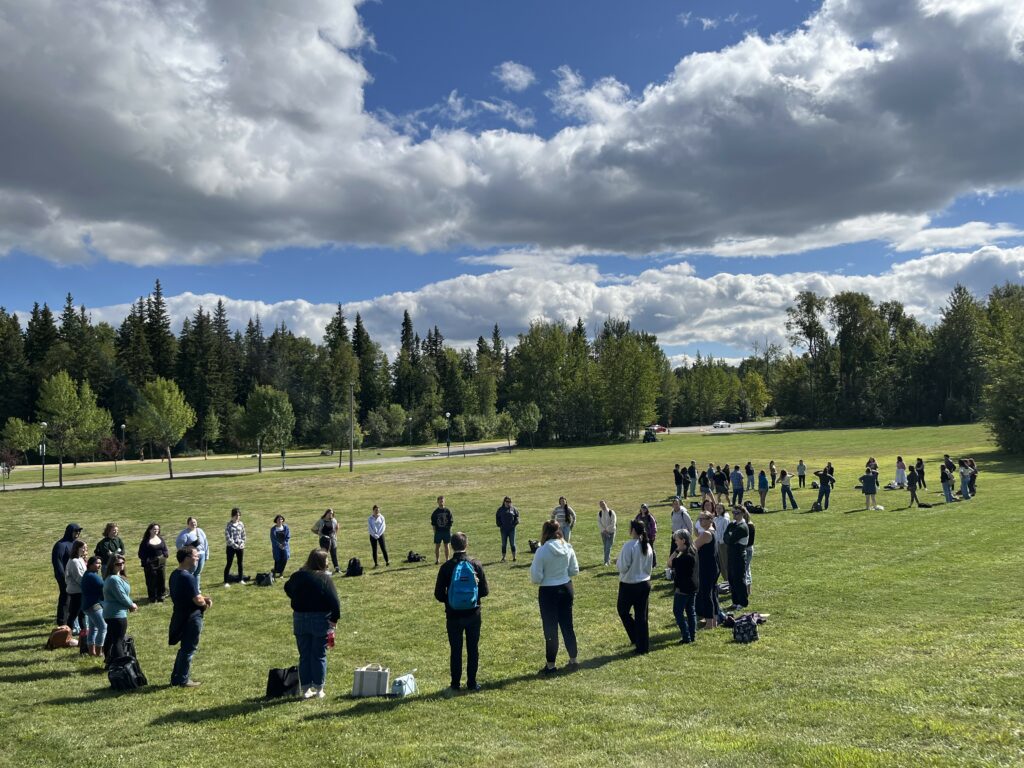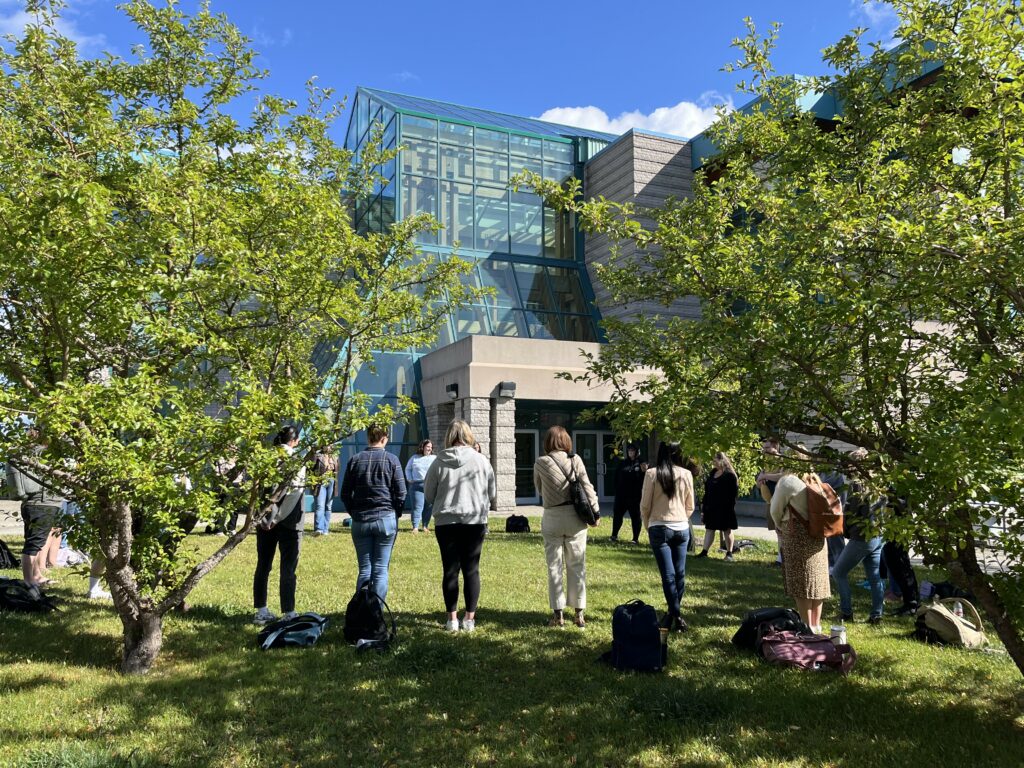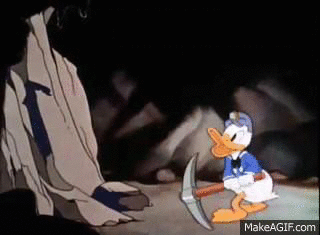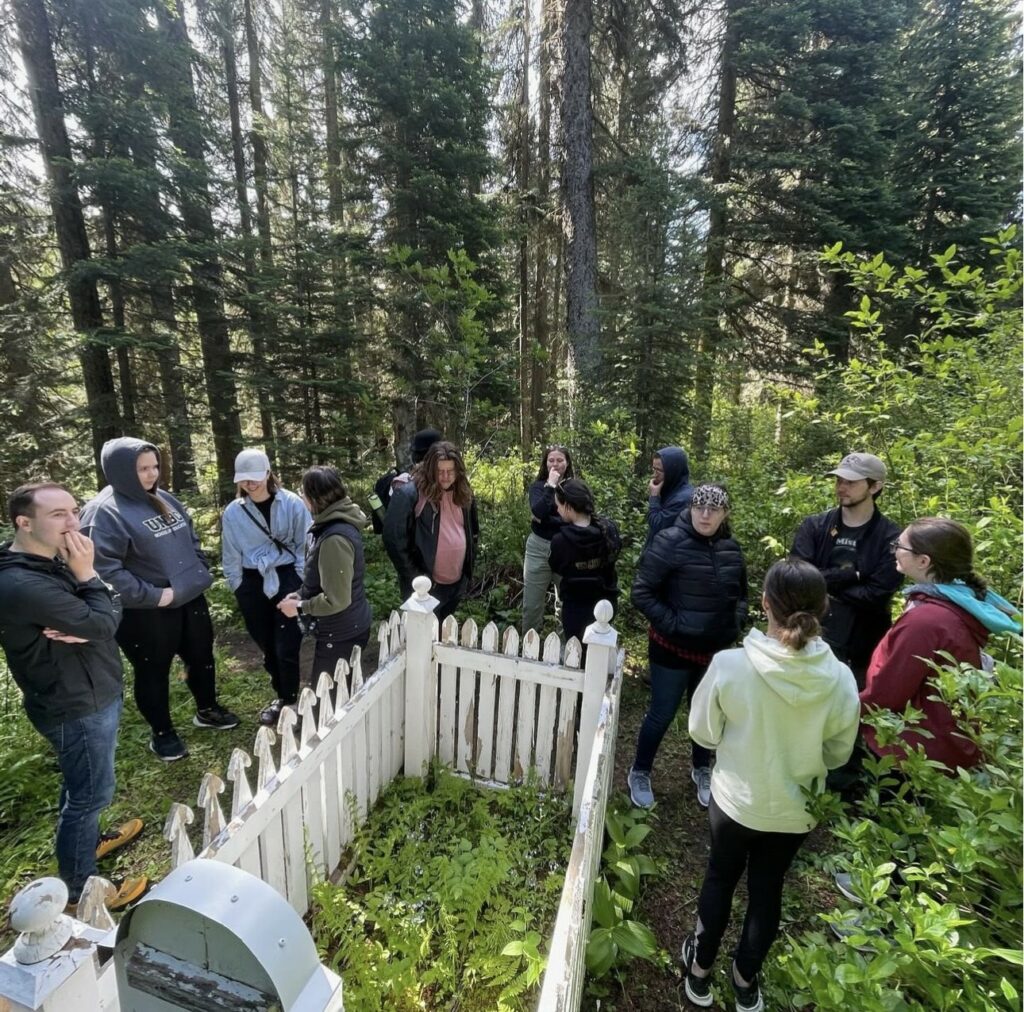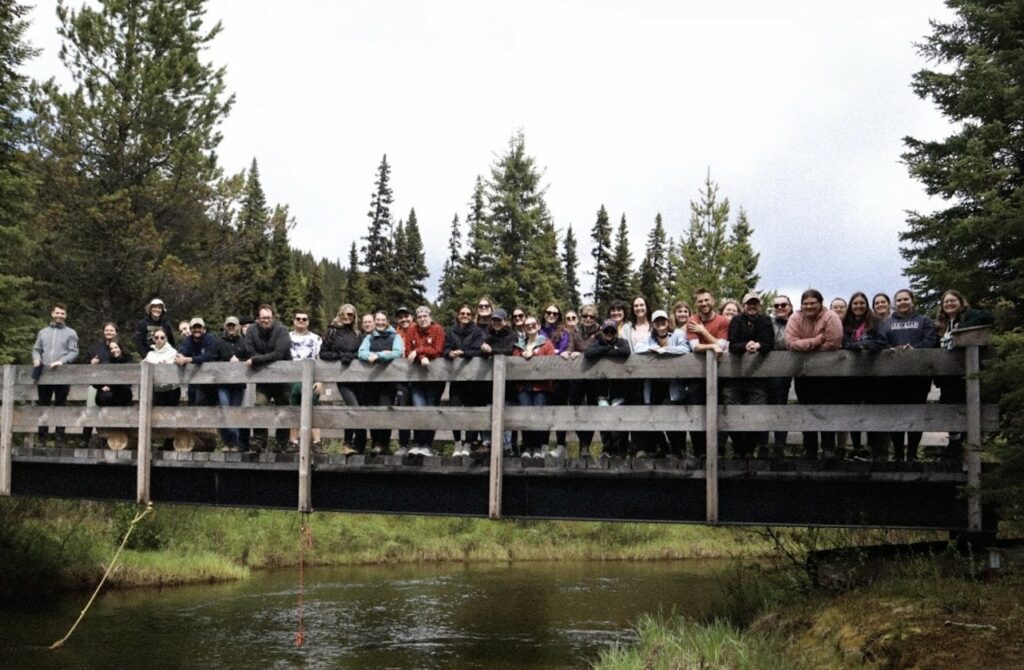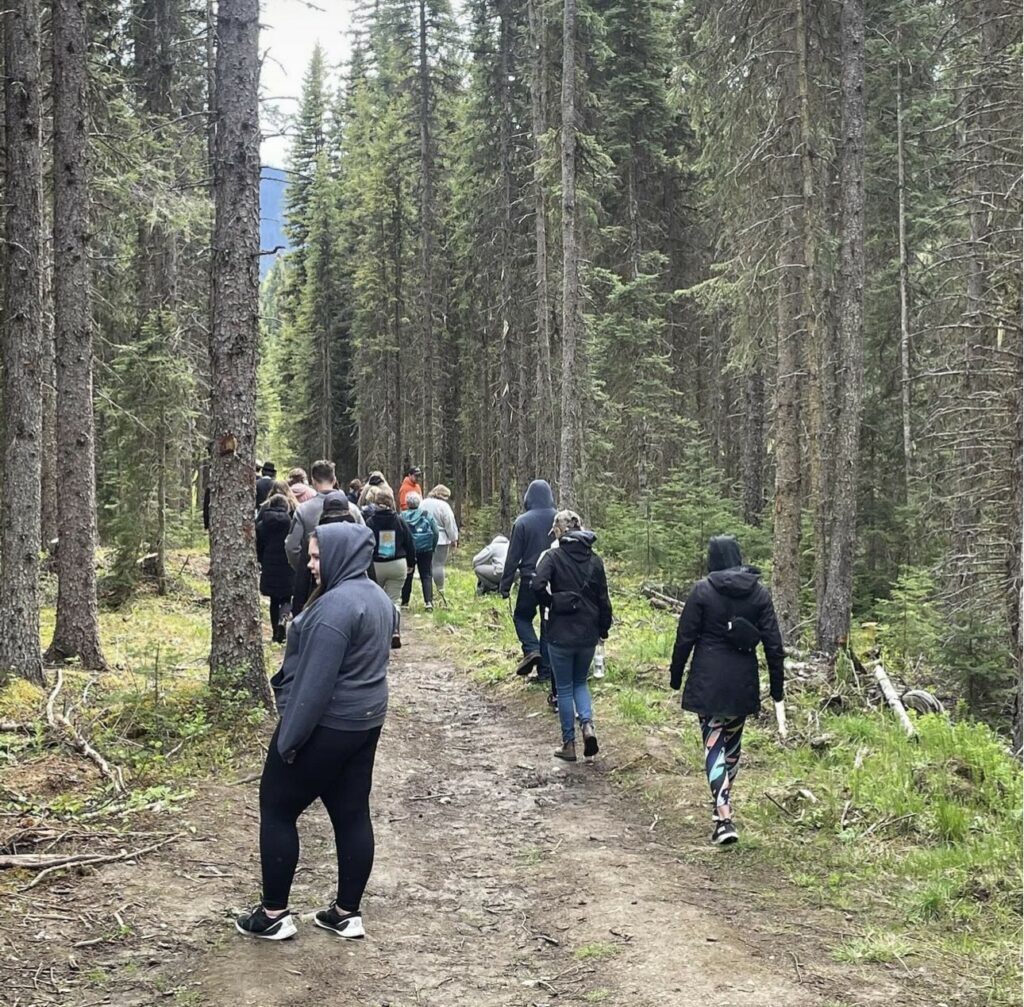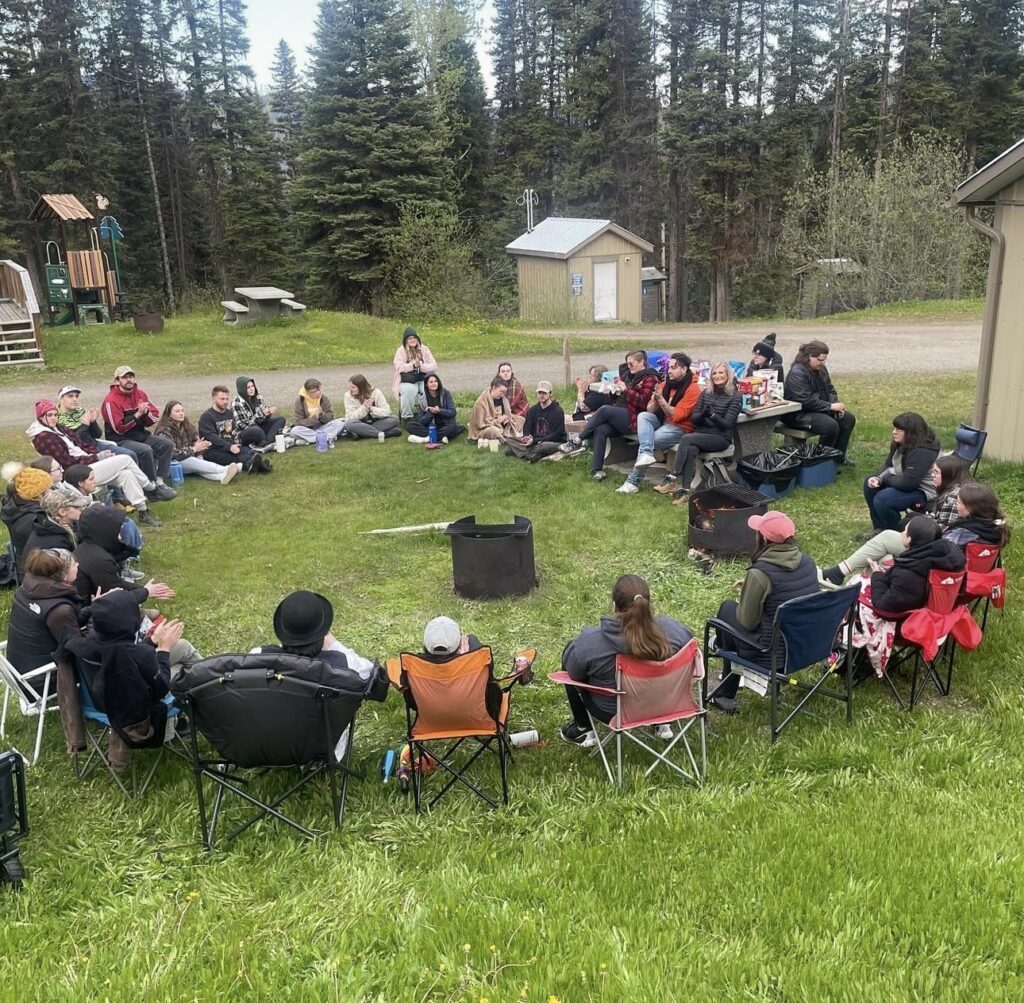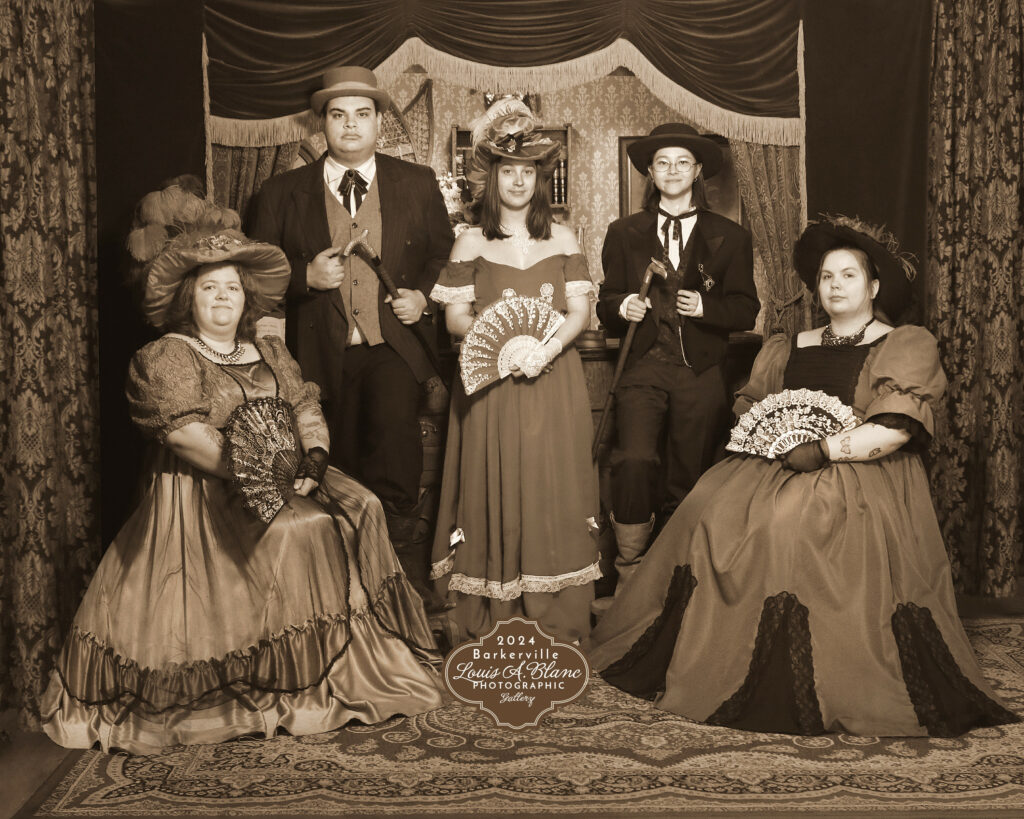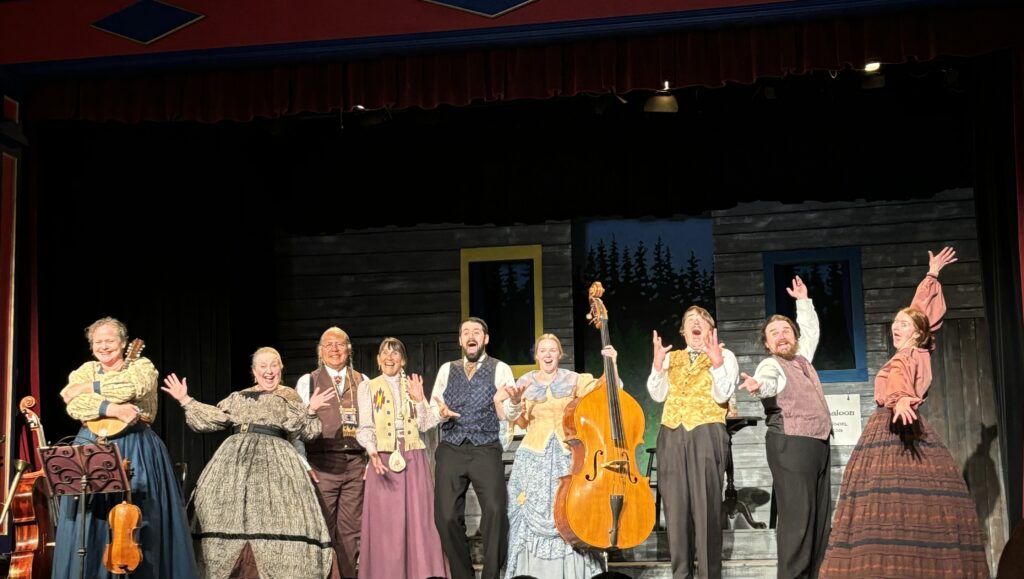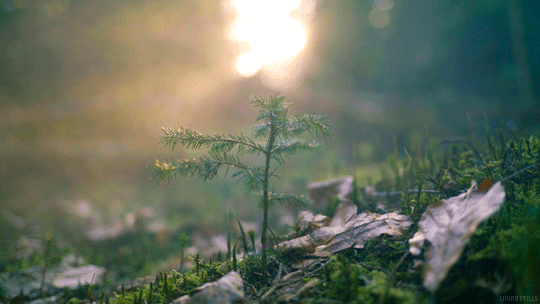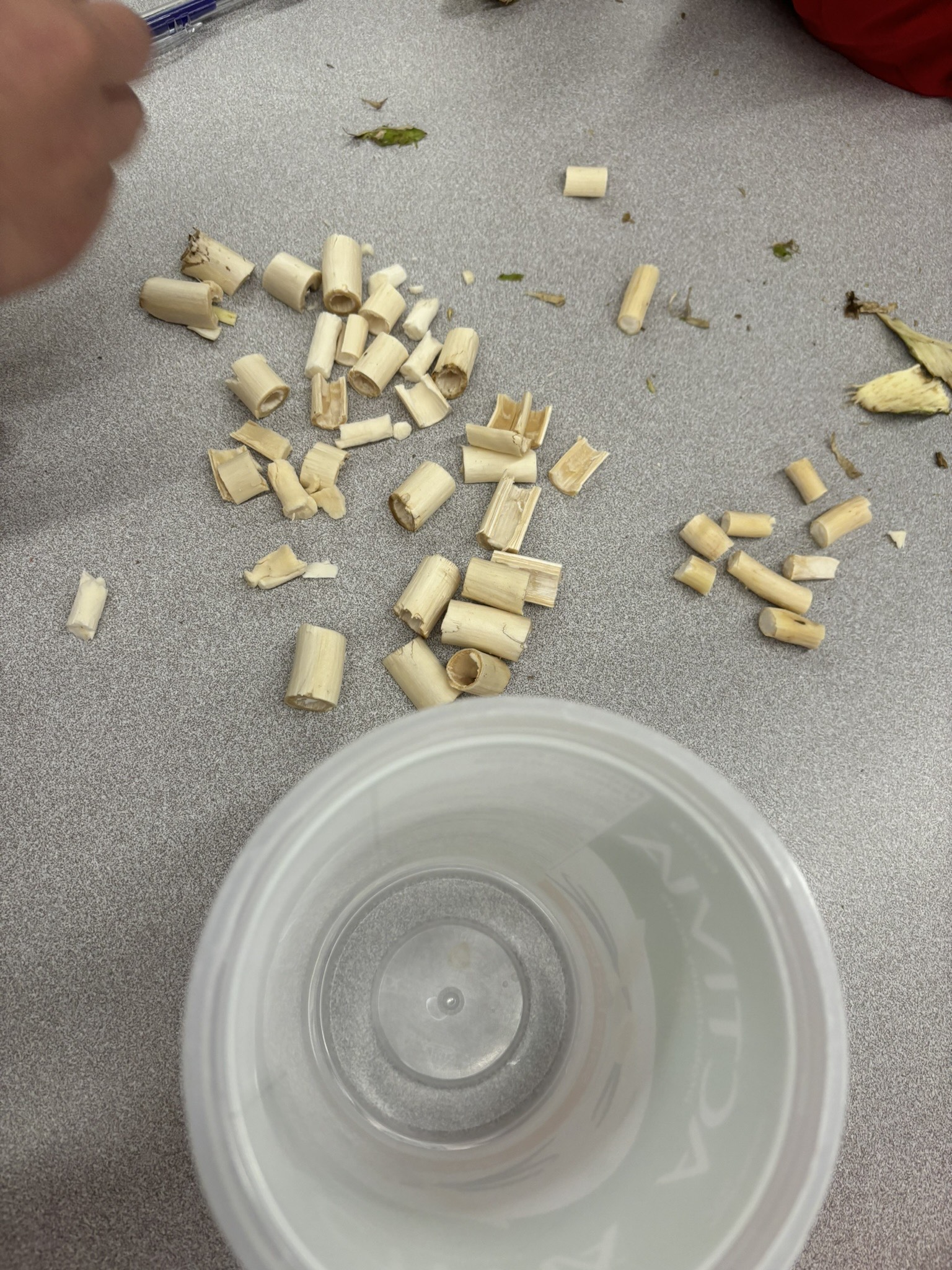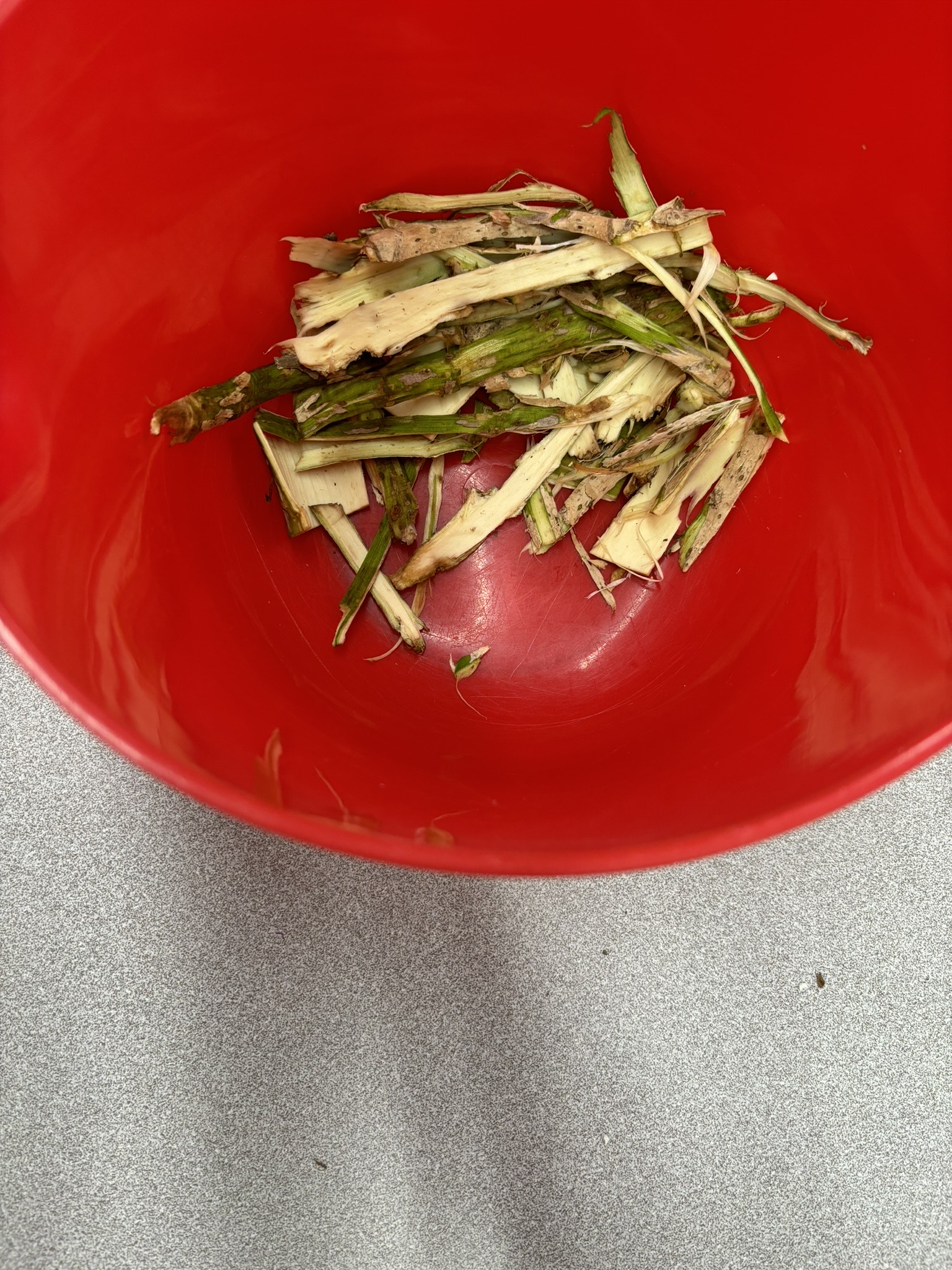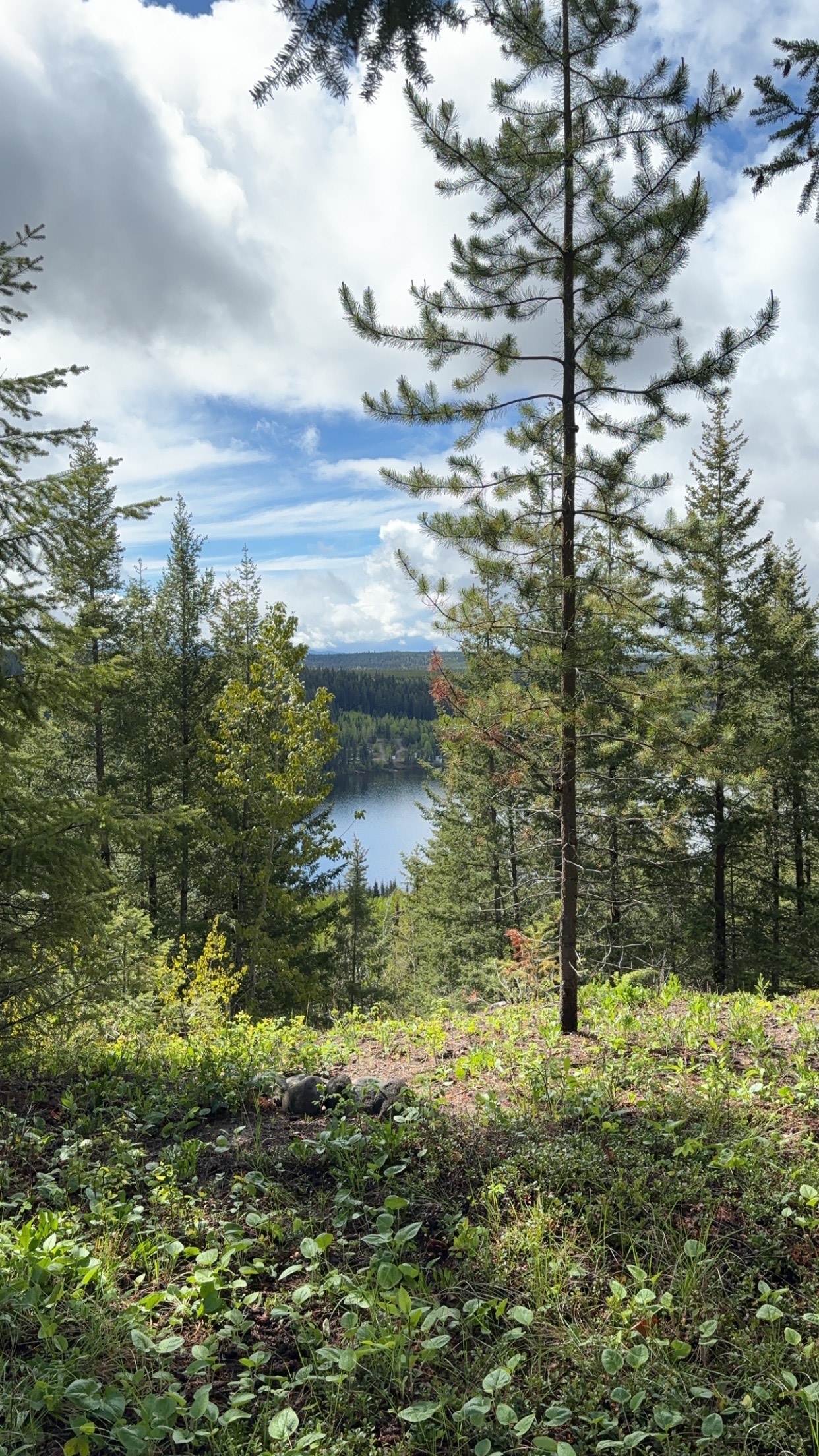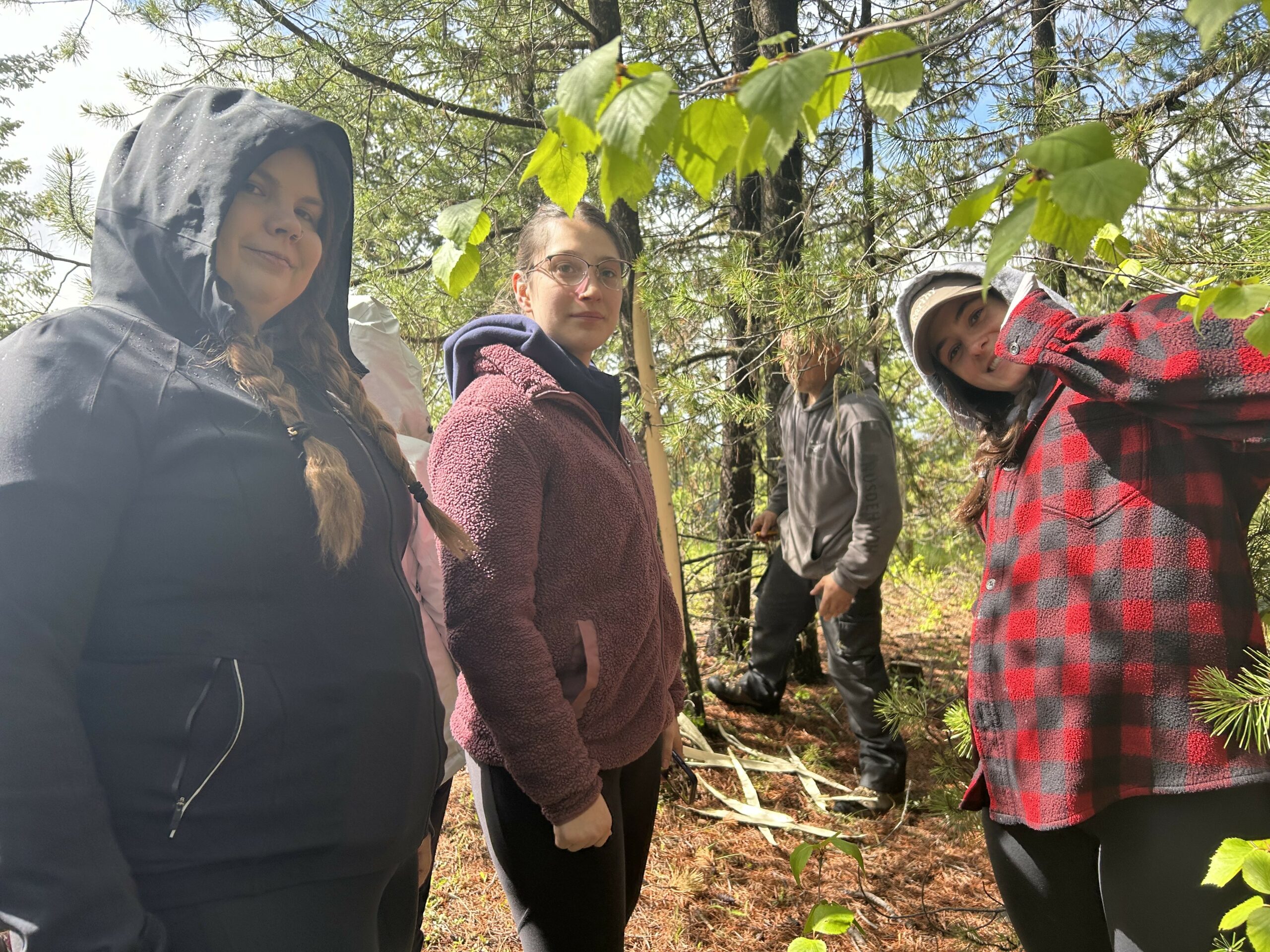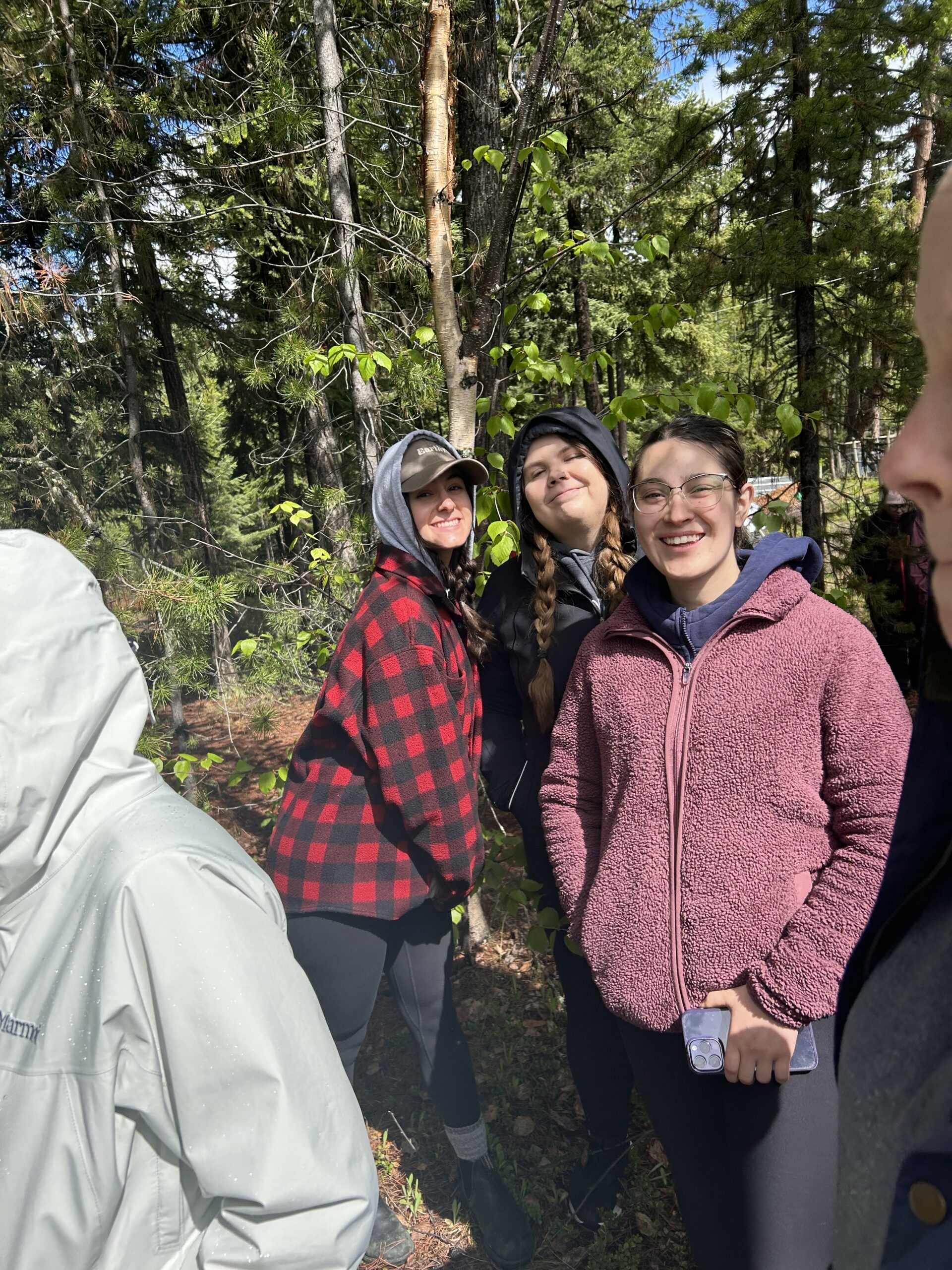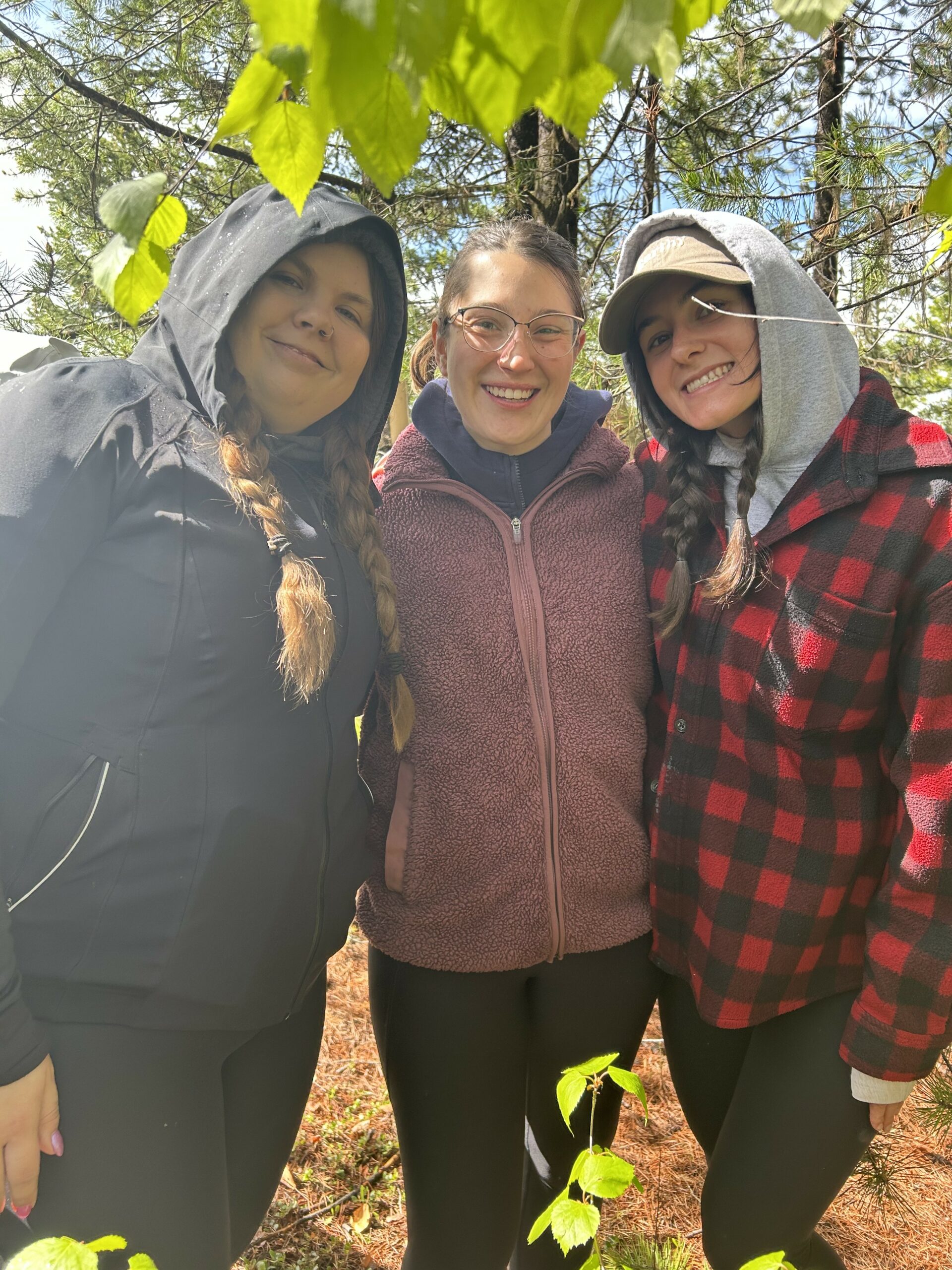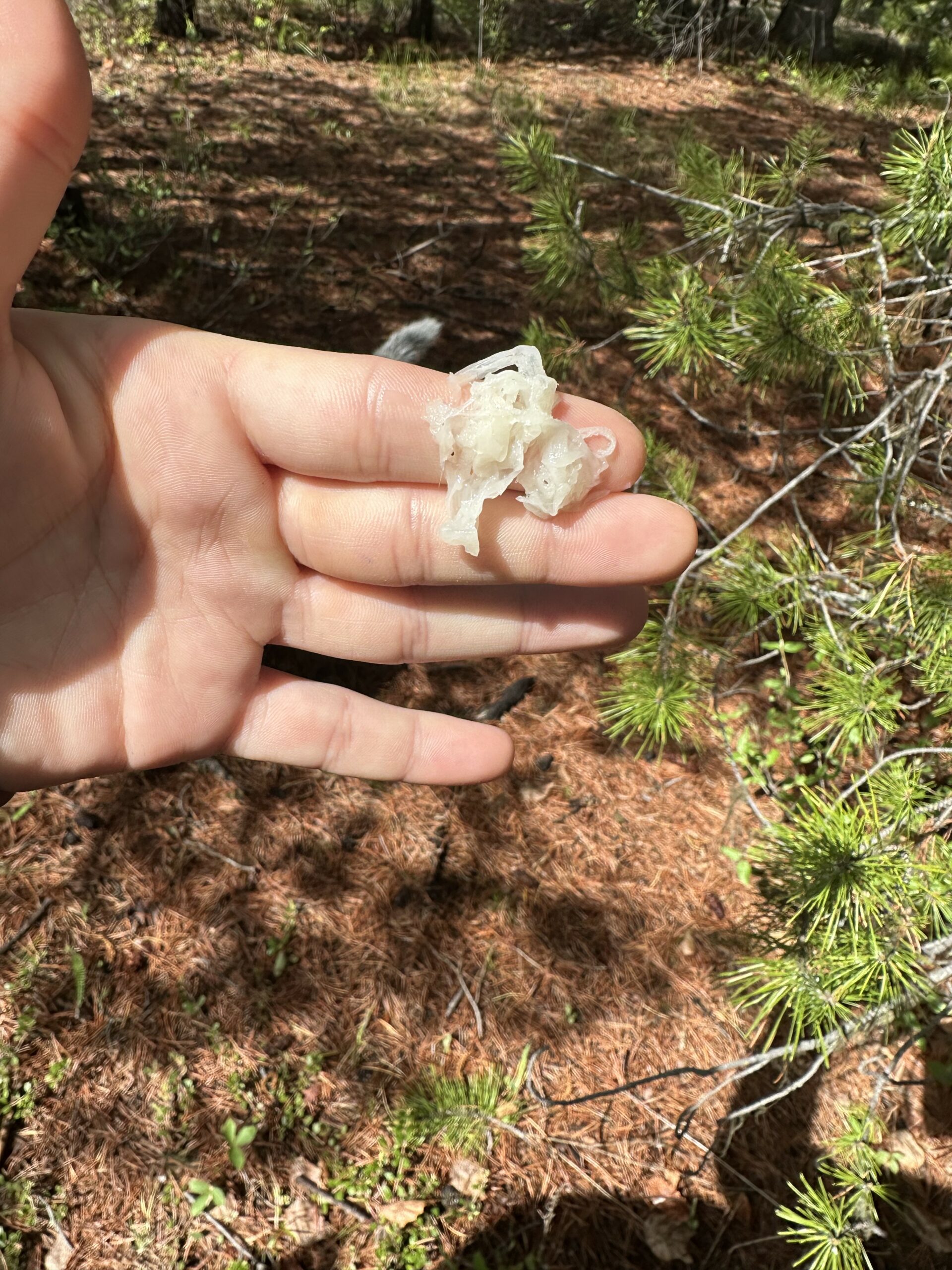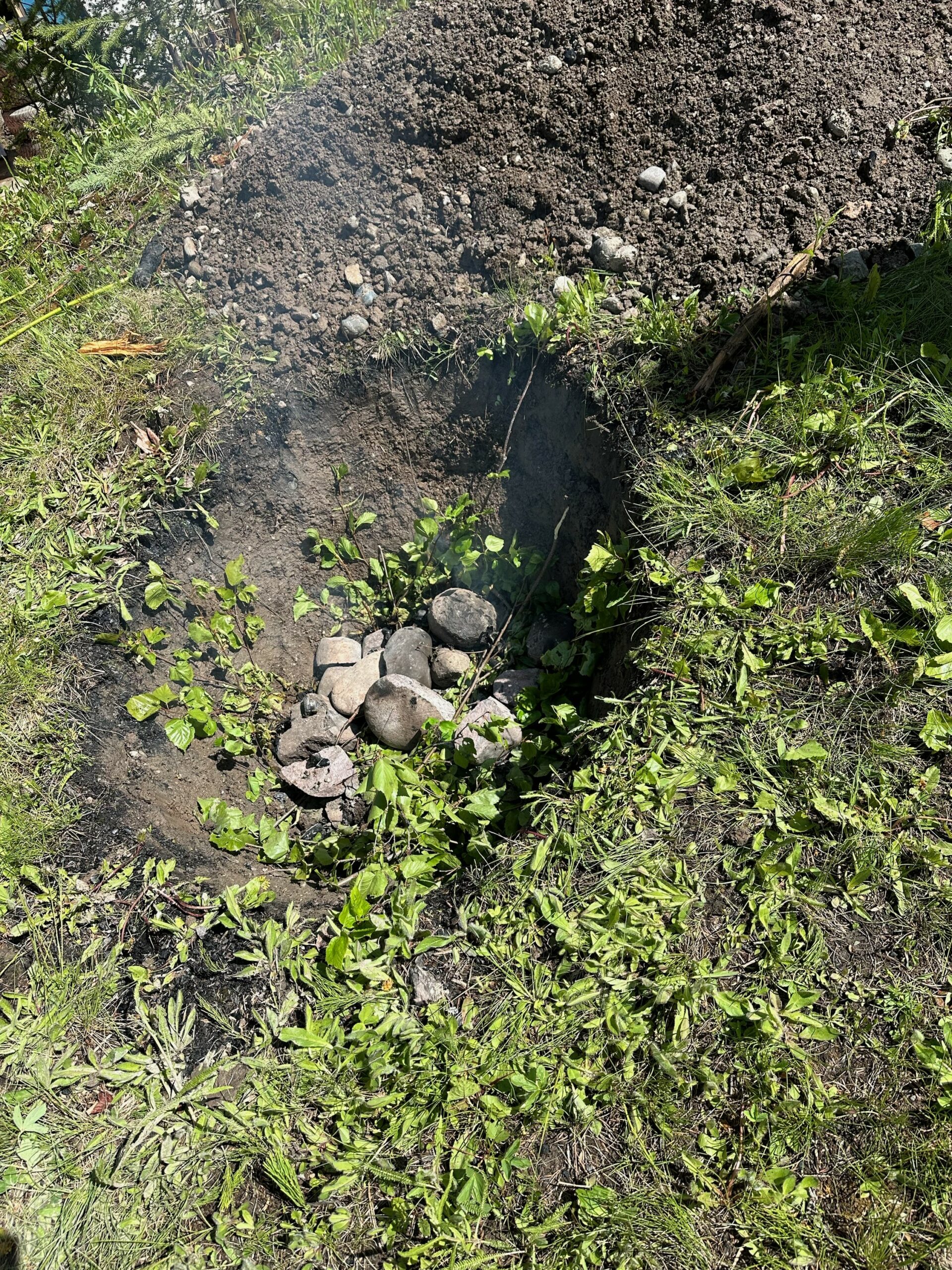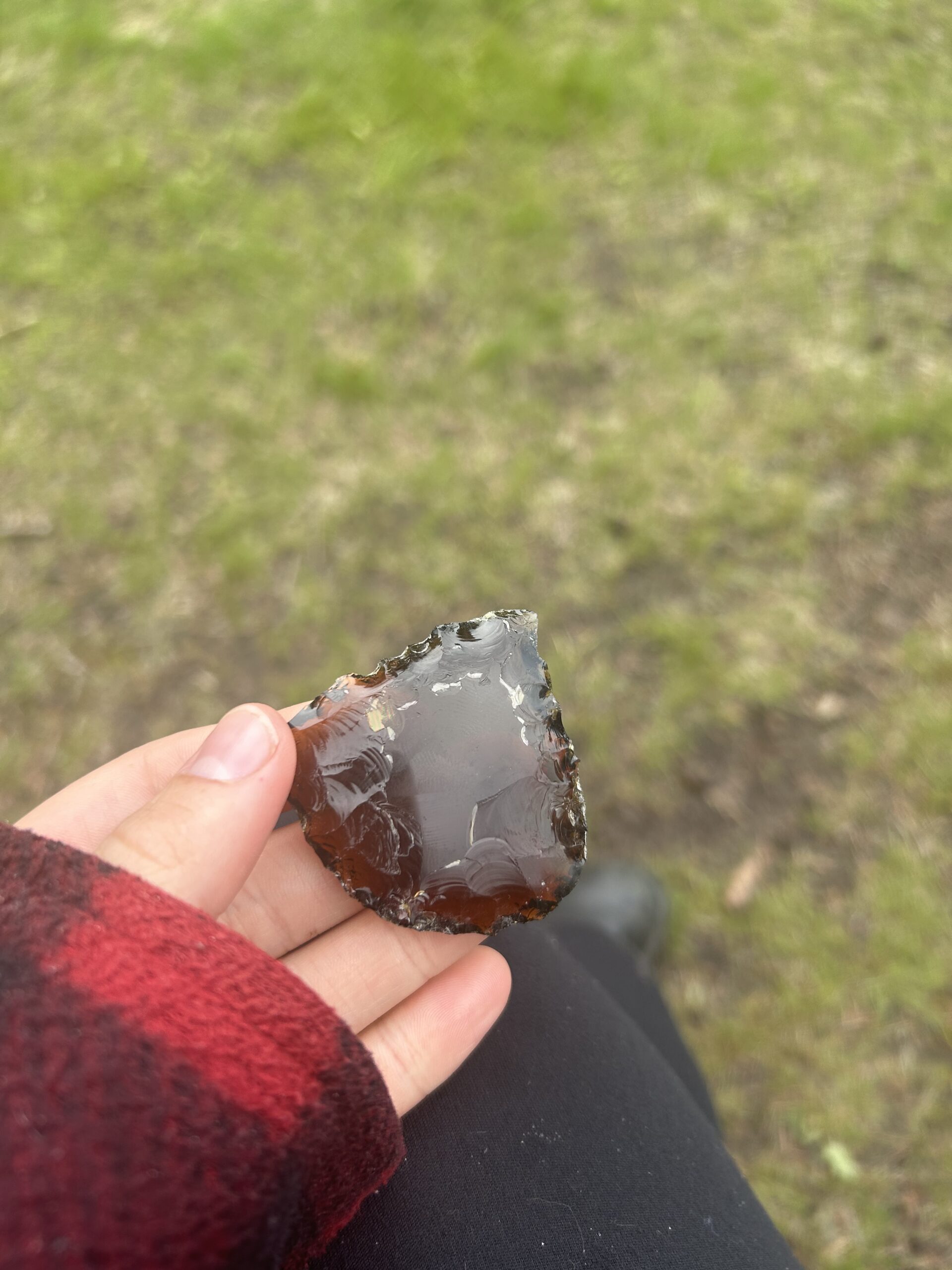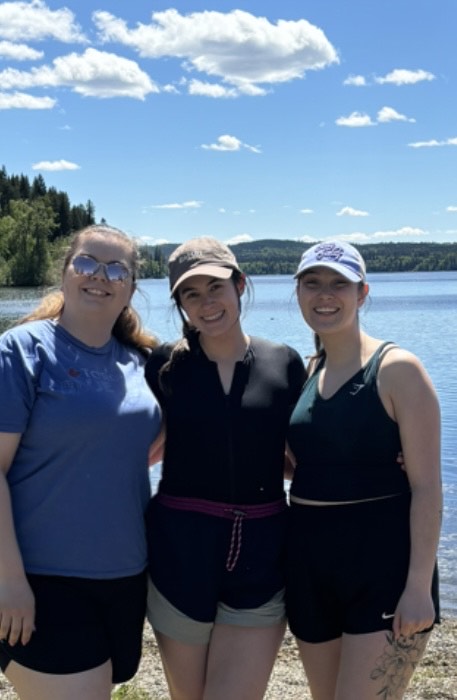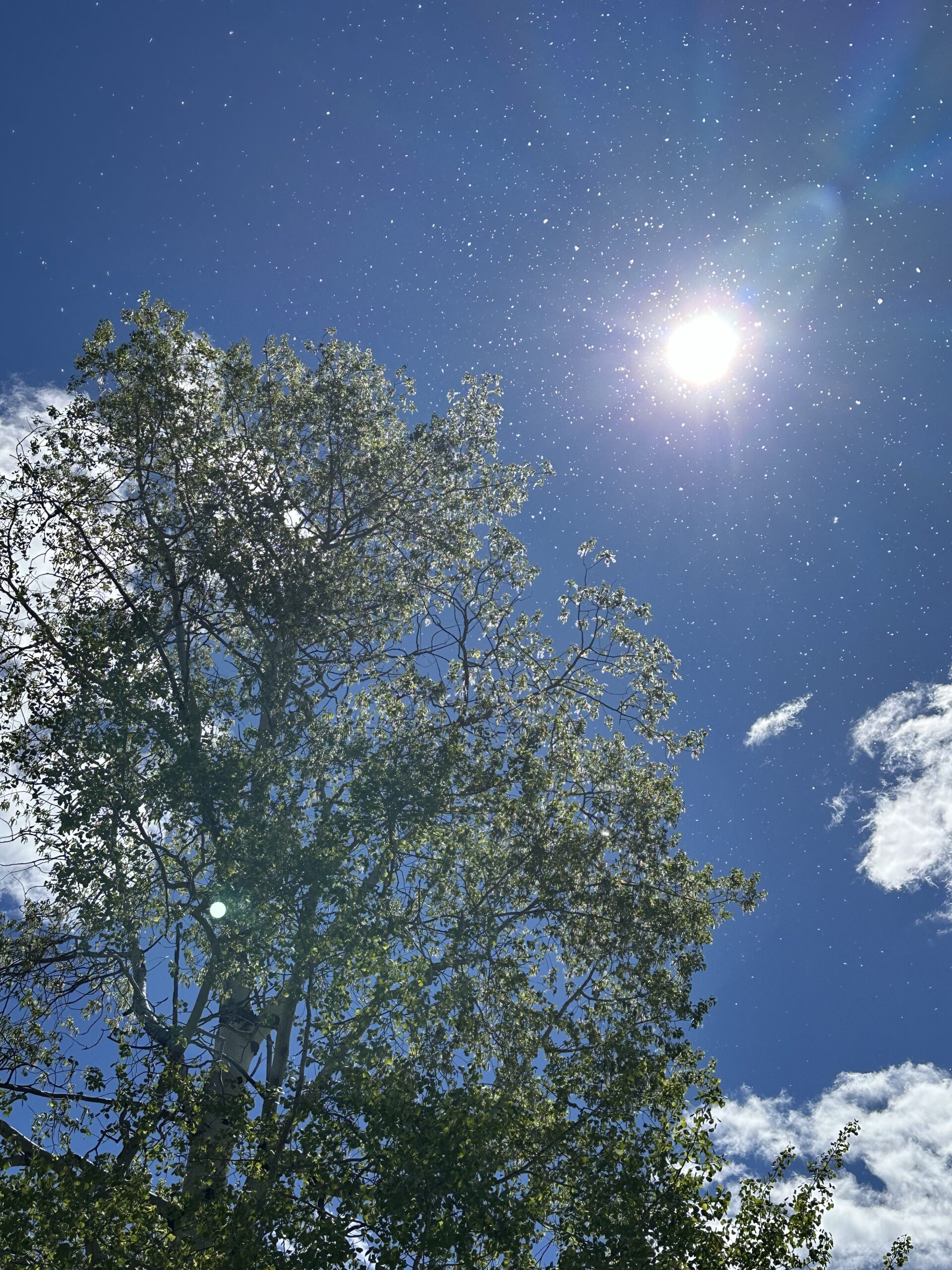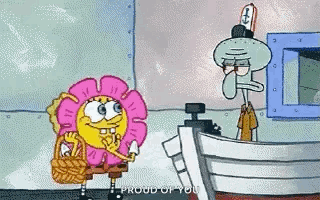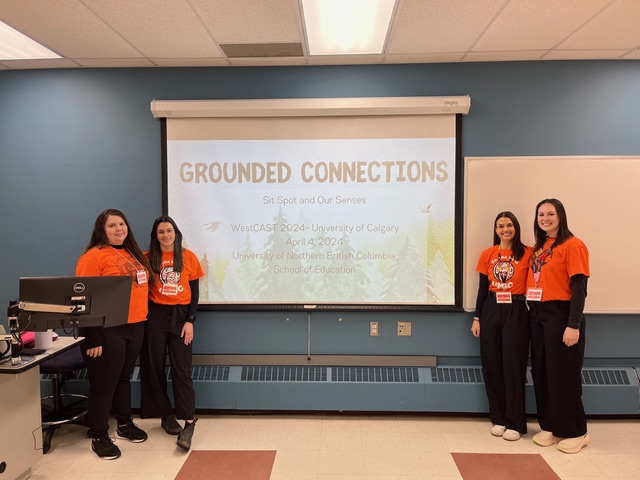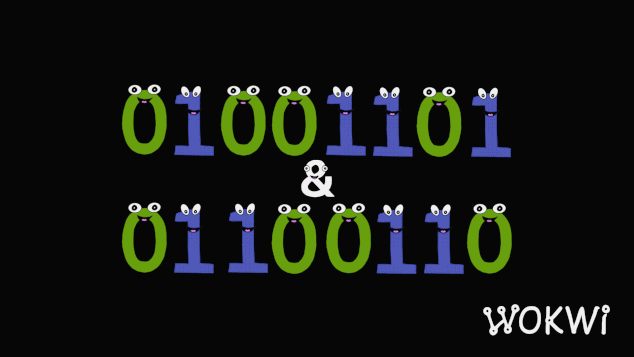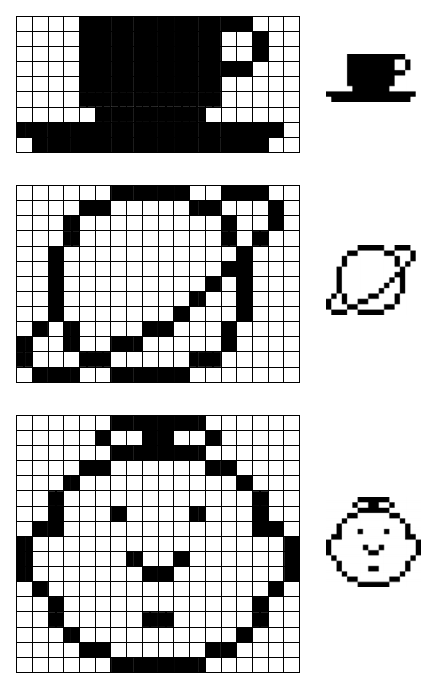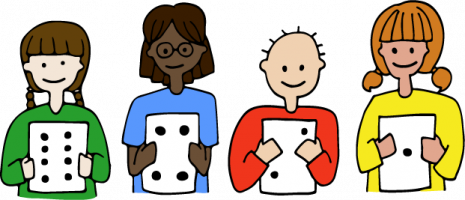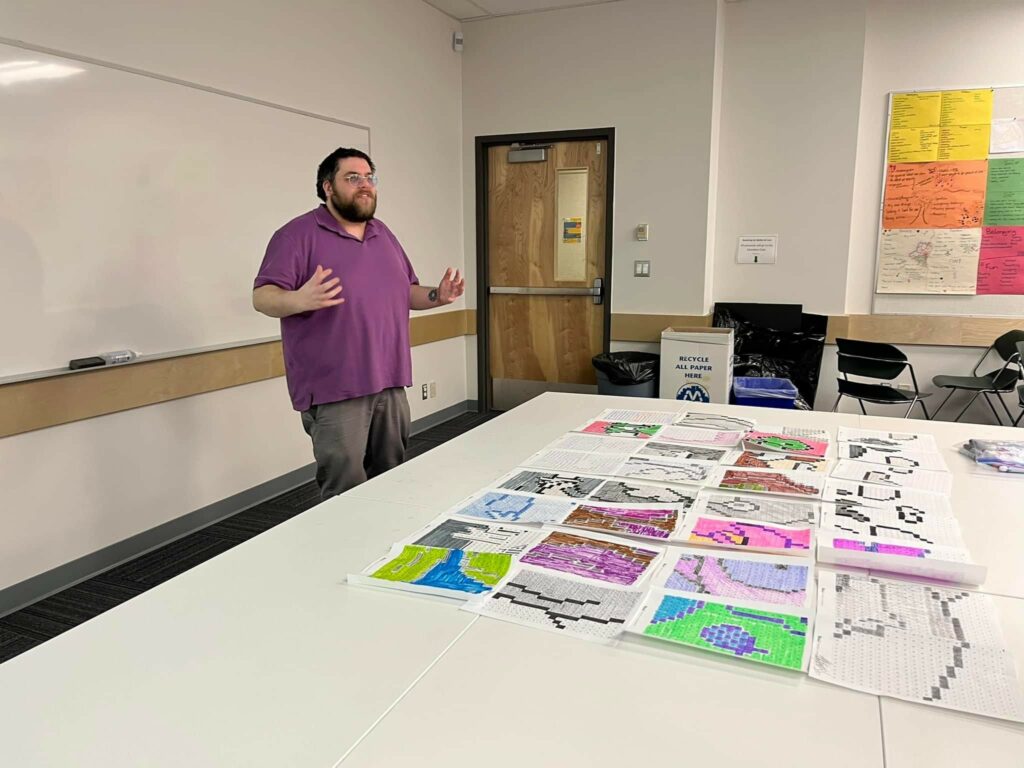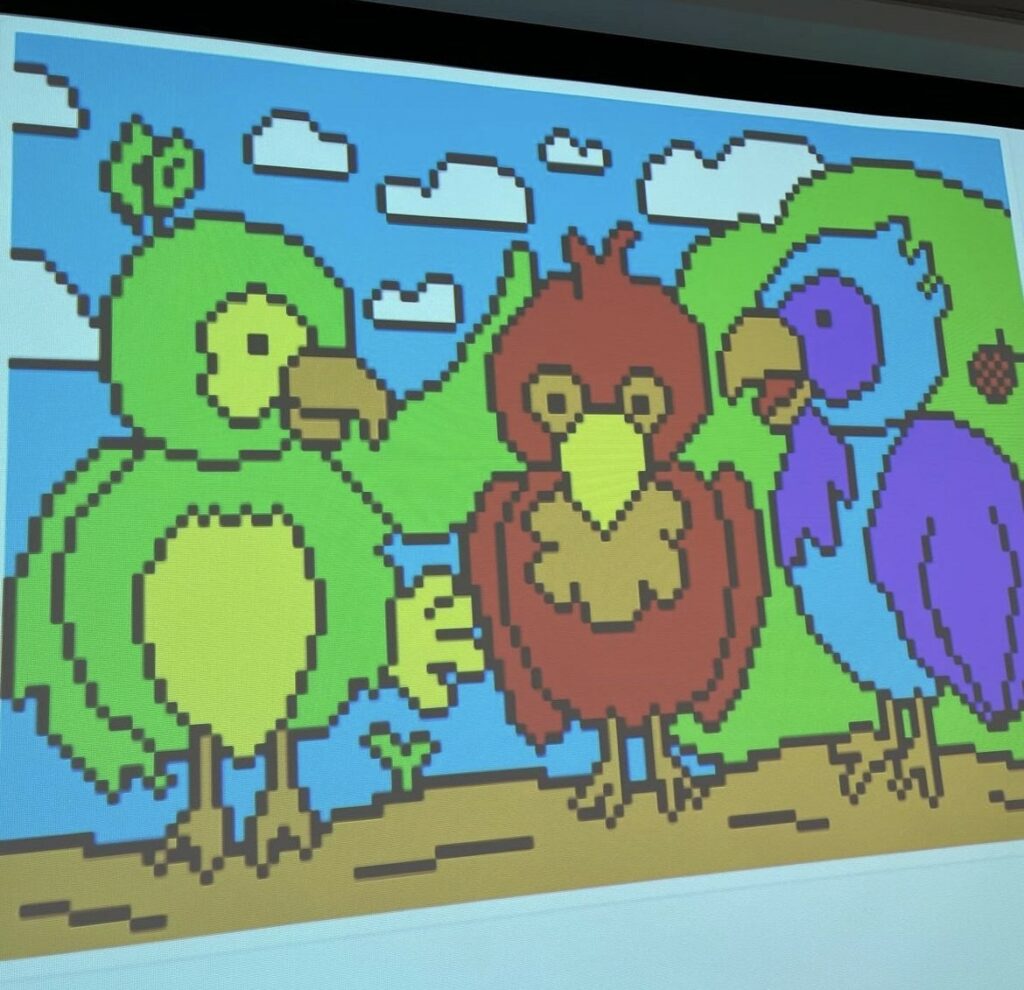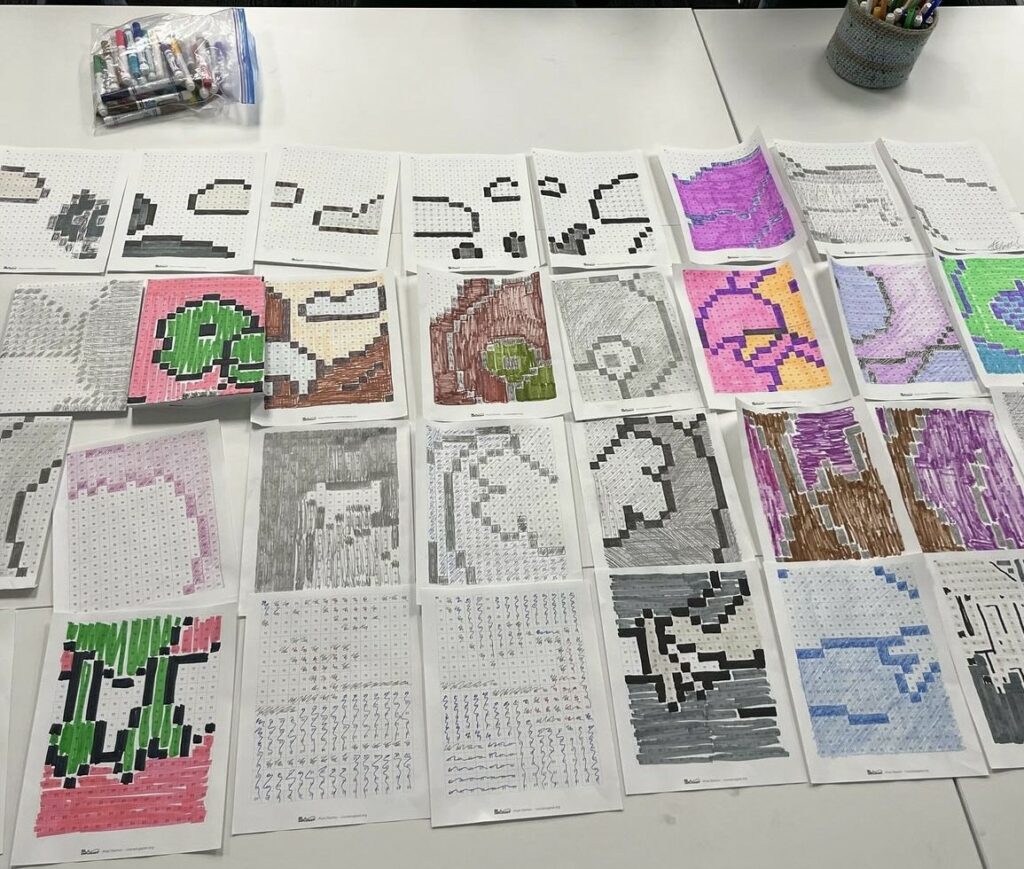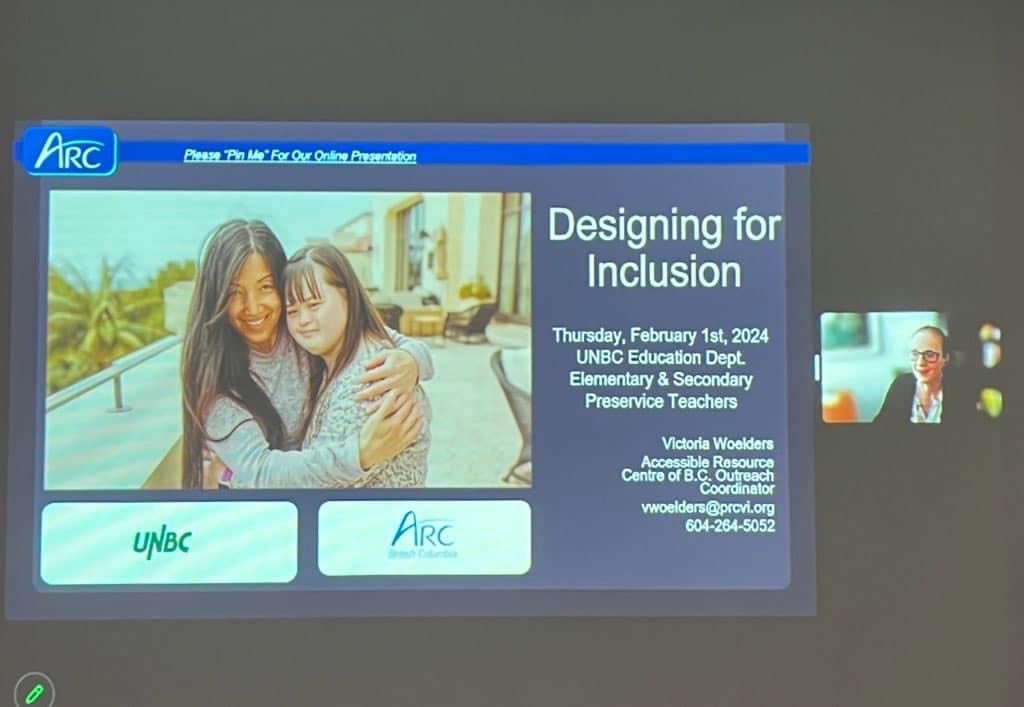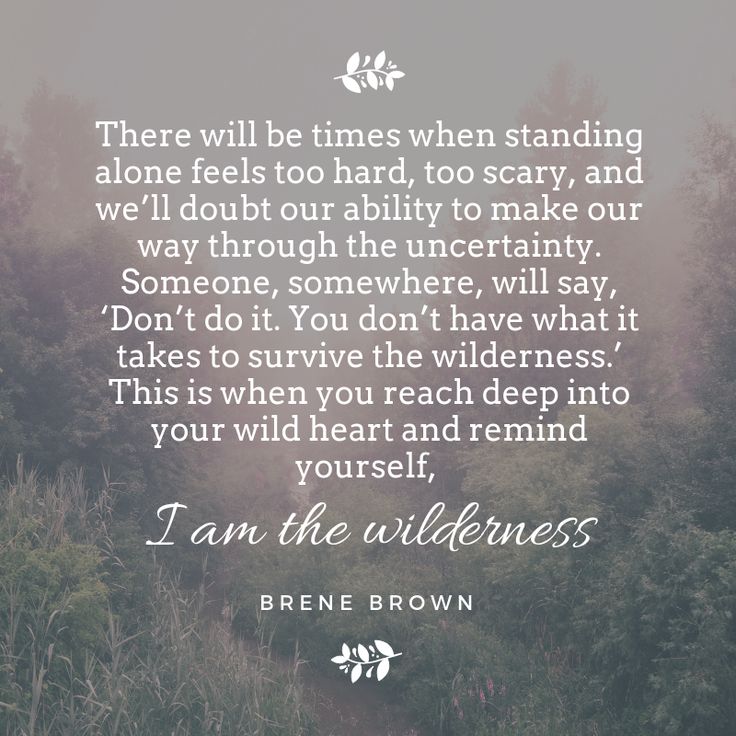
At the Research Forum on Educator Wellbeing in Kelowna my group and I had the opportunity to present “Teacher Wellness through Land-based Pedagogies: A Lesson Study, Sitspot and our senses” emphasizing the profound importance of getting students outside and engaging with the natural world. This experience marked a turning point for me, as I felt more confident in my speaking than ever before, connecting with the audience on an emotional level. The impact of our time spent outdoors was palpable; many participants expressed a renewed sense of joy and inspiration. In fact, we encountered some amusing challenges trying to coax some back inside, as they were so captivated by the experience. This reinforced the idea that nature not only enhances our teaching practices but also fosters a deeper emotional connection among educators and students alike.
When I am at my Sit Spot I’m usually in the middle of nowhere and I feel an escape from the hustle of life.
Julia Vickers
During the presentation, we shared personal anecdotes about how sit spots can create meaningful moments of reflection and connection for both educators and students. We shared what it is like in our sit spots and how being outside makes us feel. By taking the time to pause and observe the environment, we can cultivate mindfulness and appreciation for the world around us. We highlighted various activities that can be incorporated into sit spot practices, from journaling to guided discussions, which encourage deeper engagement with the surroundings. The feedback we received afterward was overwhelmingly positive, with many participants expressing a desire to implement similar practices in their own classrooms and how it was a change in pace for the forum. This exchange of ideas not only reinforced the value of outdoor learning but also fostered a sense of community among educators, united by a shared goal of enhancing student wellbeing through nature-based experiences.
